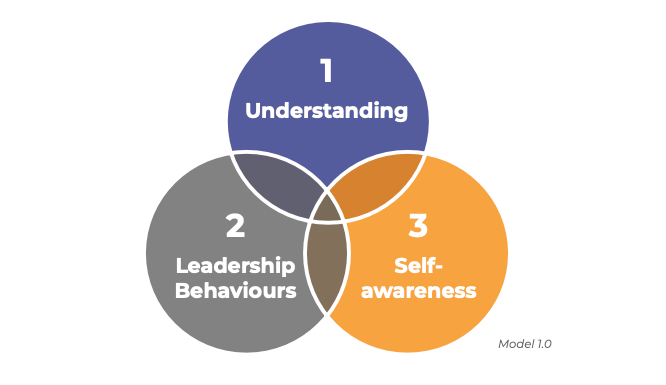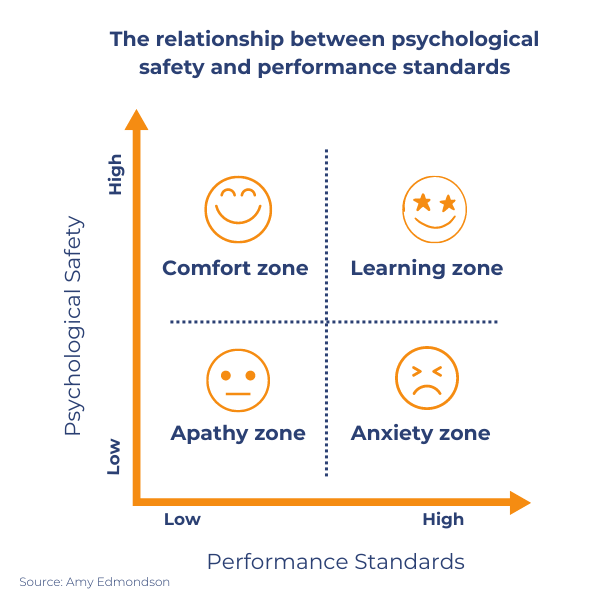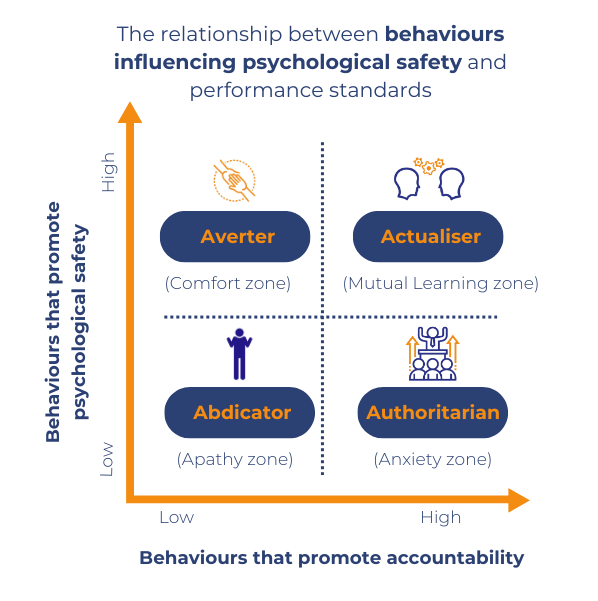Recent government legislation now means that every leader – from Board Director to a new team leader – needs to sit up and consider the greater responsibility for understanding, managing, and responding to psychosocial hazards in the workplace.
The legislative changes have meant a material increase in fines (millions of dollars) and terms of imprisonment for not complying with work health and safety laws.
A psychosocial hazard can include anything in the workplace that could cause psychological harm or negatively impact someone’s mental health.
Marie Boland, Chief Executive Officer, Safe Work Australia explains that, “Under model work health and safety laws, psychosocial hazards and risks are treated the same as physical hazards and risks.”
Some common psychosocial hazards include:
- Job demand (high workloads or excessive pressure)
- Lack of role clarity (unclear job expectations or responsibilities)
- Traumatic events or material (exposure to distressing incidents)
- Remote or isolated work (working alone or in isolated locations)
- Harassment, including sexual and gender-based harassment.
The Psychological Health and Safety in the Workplace Report highlights the changing impact of work-related psychological injuries in Australia. During 2021-22:
- Women are more likely to be exposed to harmful behaviours at work
- Mental health conditions accounted for 9% of all serious workers’ compensation claims, a 36.9% increase since 2017-18.
- The median time lost was more than 4 times greater than that of all physical injuries and illnesses (2020-21).
- The median compensation paid for mental health conditions was more than 3 times greater than that of all physical injuries and illnesses.
- Workers with claims for mental health conditions experienced poorer return to work outcomes and were more likely to experience stigma from colleagues and their employers.
Effective leaders operate at the intersection of three crucial domains
In our experience of coaching leaders who are striving to minimise psychological risk in the workplace, we have observed that the ones who are most effective, are operating at the intersection of three crucial domains:
- Self-awareness: They actively build their self-awareness to identify blind spots in their personal behaviour.
- Understanding: They have a rigorous understanding and appreciation of the 14 psychosocial hazards described in the legislation.
- Behaviours: They consistently demonstrate the leadership behaviours and skills that enhance psychological safety and minimise psychosocial risk.

Domain one: Understanding psychosocial hazards
Leading Work Health and Safety Lawyer and Partner at Seyfarth Shaw, Paul Cutrone advises Boards on how to balance the need to meet organisational objectives while complying with strict work, health and safety laws.
According to Mr. Cutrone, for high-performance organisations, this balancing act is often like walking a tightrope of competing challenges, characterised by questions he often assists client with such as:
- How do we strike the balance between encouraging people to optimise their work effort, but not burn them out?
- How do we balance the need for performance conversations, without causing psychosocial harm?
To illustrate this difficulty in getting this balance right, Mr. Cutrone has cited many instances of supporting clients through regulatory investigations and incidents into alleged work overload and lack of role clarity.
Domain two: Leadership behaviours
The behavioural mandate for leaders is to balance two key objectives:
- Leading teams to support the organisation’s moral and legal obligations to minimise psychosocial risks by creating a psychologically safe workplace, and
- Holding these same teams accountable for delivering results
Creating the conditions for a psychologically safe workplace
The term Psychological Safety was coined by Harvard Business School Professor, Amy Edmonson who describes it like this:
“Psychological safety is a belief that one will not be punished or humiliated for speaking up with ideas, questions, concerns or mistakes.”
Some of the hallmarks of a culture of psychological safety include:
- An inclusive and welcoming environment where alternative views are encouraged.
- People feeling comfortable to take risks and asking others for help.
- A lack of counter-productive workplace behaviours.
- Feelings that one’s skills are valued in the organisation.
Psychological safety is not about “constantly being nice”
In her work, Professor Edmondson has found that one of the biggest concerns for leaders is that creating psychological safety in the workplace will somehow lessen the emphasis on accountability for results.
Professor Edmonson acknowledges the need to find the right balance between these two sometimes opposing forces with the following visual:

Some of the specific leadership behaviours and skills that build psychological safety include:
- Dialogue and conflict management – e.g., respectfully considering all the different perspectives available; open communication and listening.
- Empathy and support – e.g., demonstrating appreciation and explicitly making others know that their contribution is valued and impactful.
- Demonstrating compassion to others, and willing to receive compassion from others.
- An attitude of humility and curiosity when approaching others – e.g., avoiding the tendency to blame the other person; adopting a learning mindset, ready to learn about the situation of the other person, as opposed to approaching situations thinking you know all the facts.
- Combination of ‘consulting’ (asking and including all members of the team) and ‘compassionate’ (demonstrating care for team members) leadership styles to establish a positive team environment.
Once a positive and trusting team climate has been established, a ‘challenging’ leadership style can help drive the team towards greater results and performance.
Domain three: Building self-awareness
The leaders that we tend to work with through our executive coaching and executive mentoring programs all hold the intent to create psychologically safe work environments.
Nonetheless, one of the truisms in leadership development is that leaders tend to judge themselves on their intent, while others judge them on their behaviours and the impacts of their decision-making.
Therefore, building self-awareness is a critical leadership skill to:
- Identify behavioural blind spots that may unconsciously be damaging psychological safety.
- Identify underlying values and beliefs that may be contributing to these undesirable behaviours.
Behaviours that erode psychological safety typically happen in situations when a leader is under pressure or when the stakes are particularly high.
To help create a framework for leaders to reflect on, and deconstruct situations where psychological safety could have been eroded, we have developed a situational personas model (see visual below):

The Abdicator
Leaders are the Abdicator persona when they fail to consciously and consistently demonstrate the micro-skills and behaviours that build psychological safety and fail to set and maintain performance standards.
Possible underlying driver:leadership immaturity.
The Averter
Leaders are playing the Averter persona when they are constantly “being nice” at the expense of setting and maintaining performance standards. These behaviours typically stem from an unhealthy need for approval.
Possible underlying driver: an unhealthy need for approval or dependency.
The Authoritarian
Leaders are playing the Authoritarian persona when they are driving performance standards at the expense of psychological safety.
Possible underlying driver:An unhealthy need for control, power or the fear of failure.
The Actualiser
Leaders are playing the role of Actualiser when they have built enough psychological safety to empower and support others to maintain high performance standards.
Possible underlying driver: Being self-actualised as a leader, i.e., acting from a desire to unlock the full potential within oneself and in others.
Operating at the intersection of understanding, behaviour, and self-awareness
The increased regulatory spotlight on psychological safety in the workplace, means that leaders are being asked to lift their game in three key areas.
- They need to understand the codes of conduct mandated by legislation
- They need to demonstrate leadership behaviours that balance creating a culture of psychological safety with high performance standards.
- At the same time, they need build the behavioural self-awareness that helps them avoid the pitfalls of over-indexing on performance and results.
These shifts in self-awareness come from sustained and regular periods of self-reflection. Executive coaching and mentoring can play a vital part in supporting in this critical domain.
Learn more about our Executive Coaching and Mentoring programs, or talk to our team about how we can support your organisation to foster a psychologically safe workplace.
Sources:
https://www.comcare.gov.au/safe-healthy-work/prevent-harm/changes-to-whs-laws
https://www.comcare.gov.au/safe-healthy-work/prevent-harm/psychosocial-hazards
https://bmchealthservres.biomedcentral.com/articles/10.1186/s12913-020-4931-2
https://content.lesaffaires.com/LAF/lacom/psychological_safety.pdf
Consulting and supportive style are positively associated with a positive team climate










